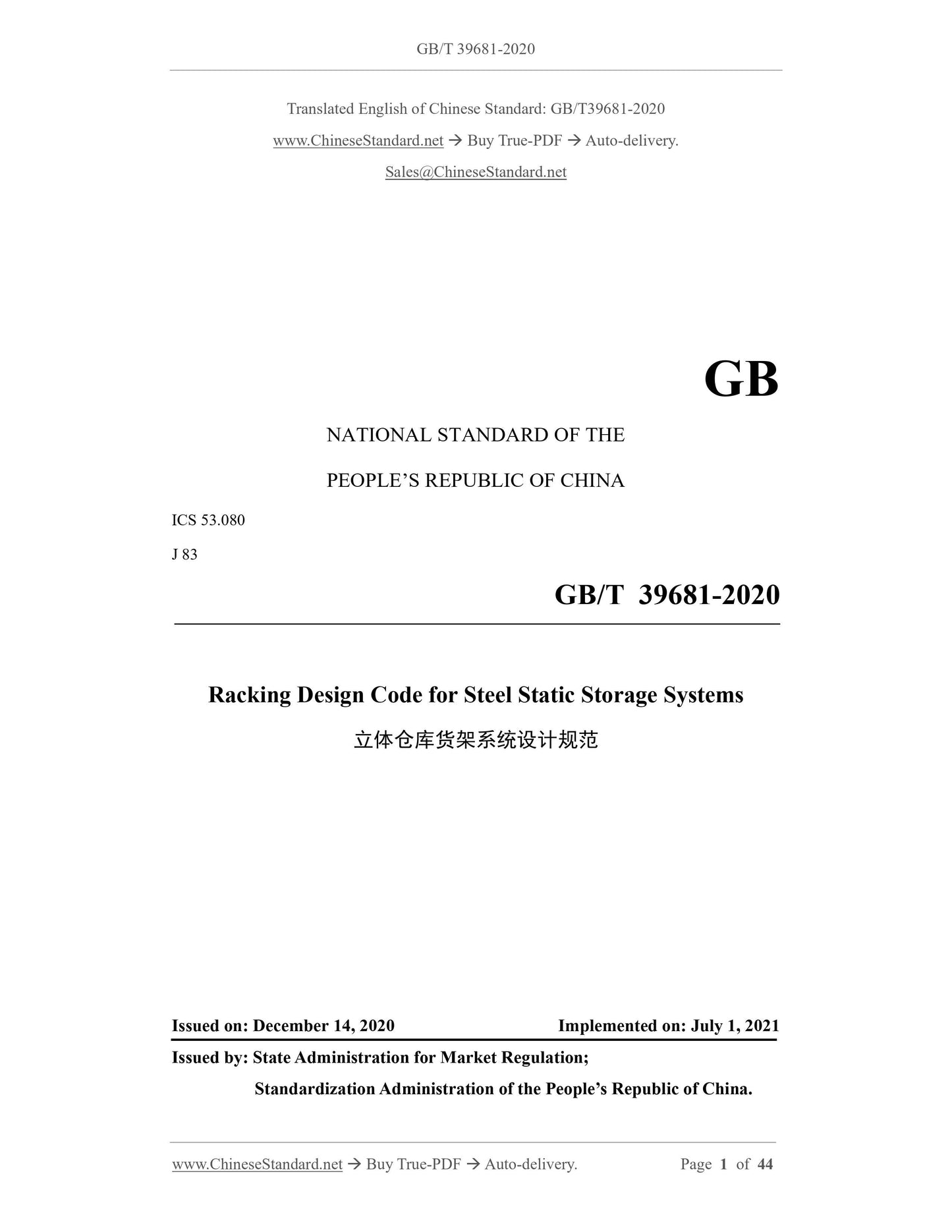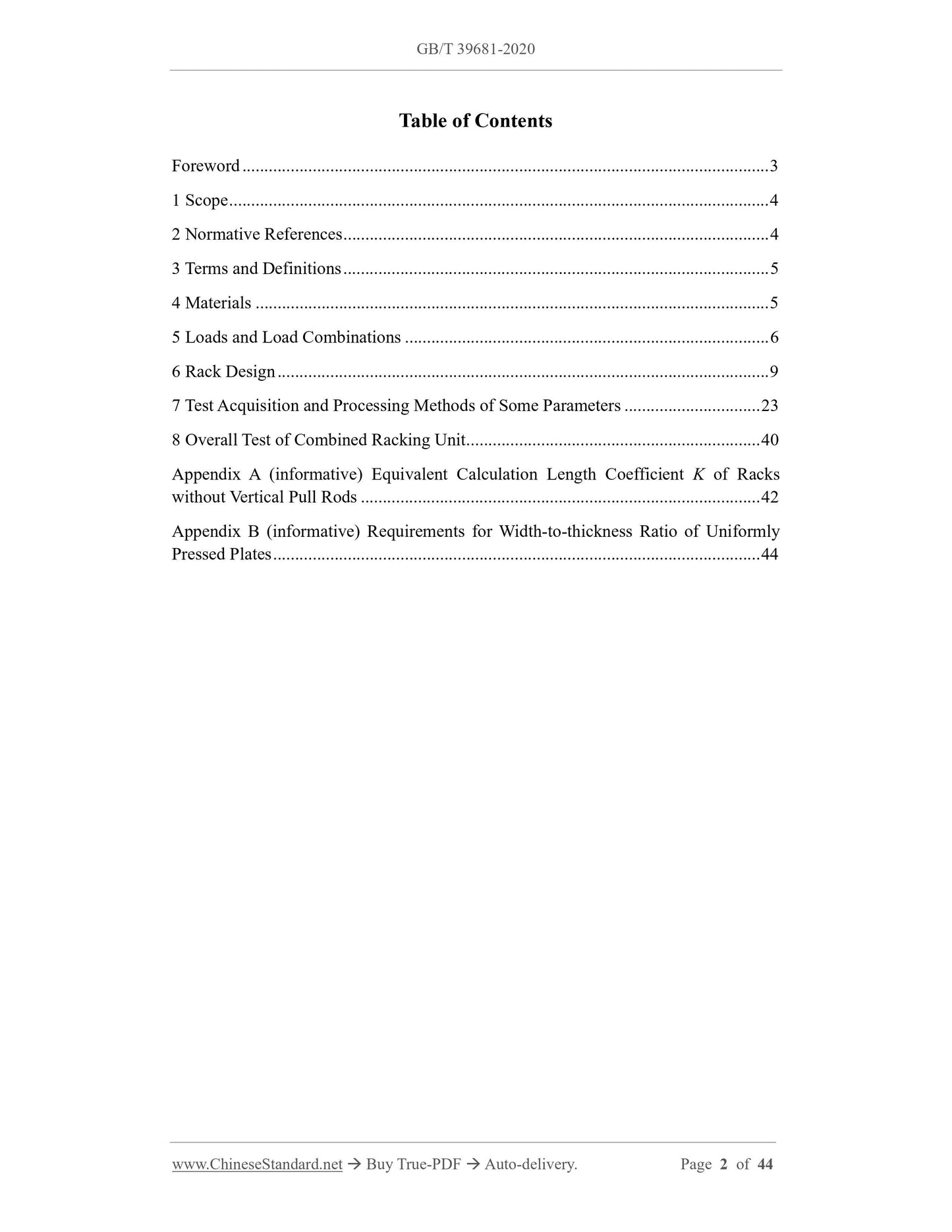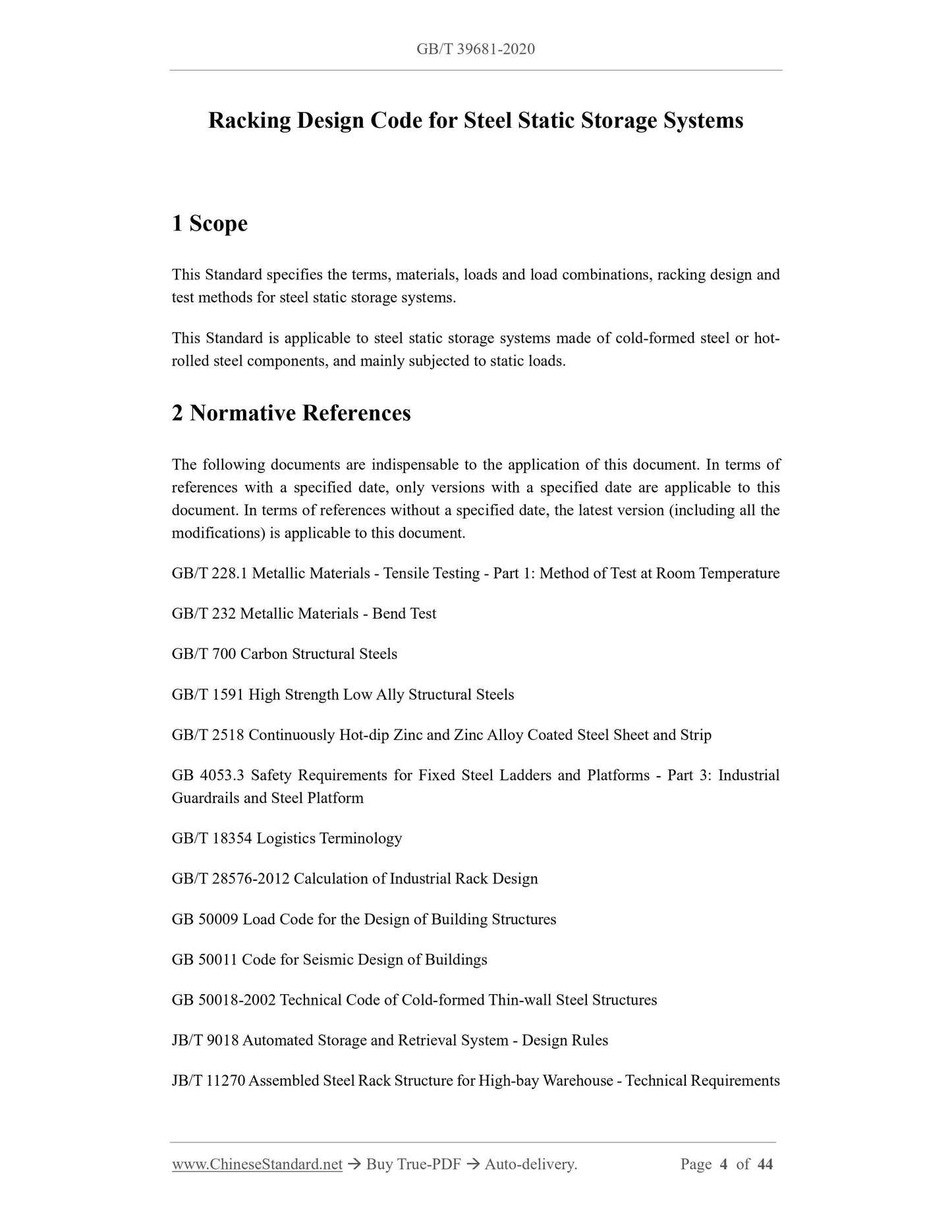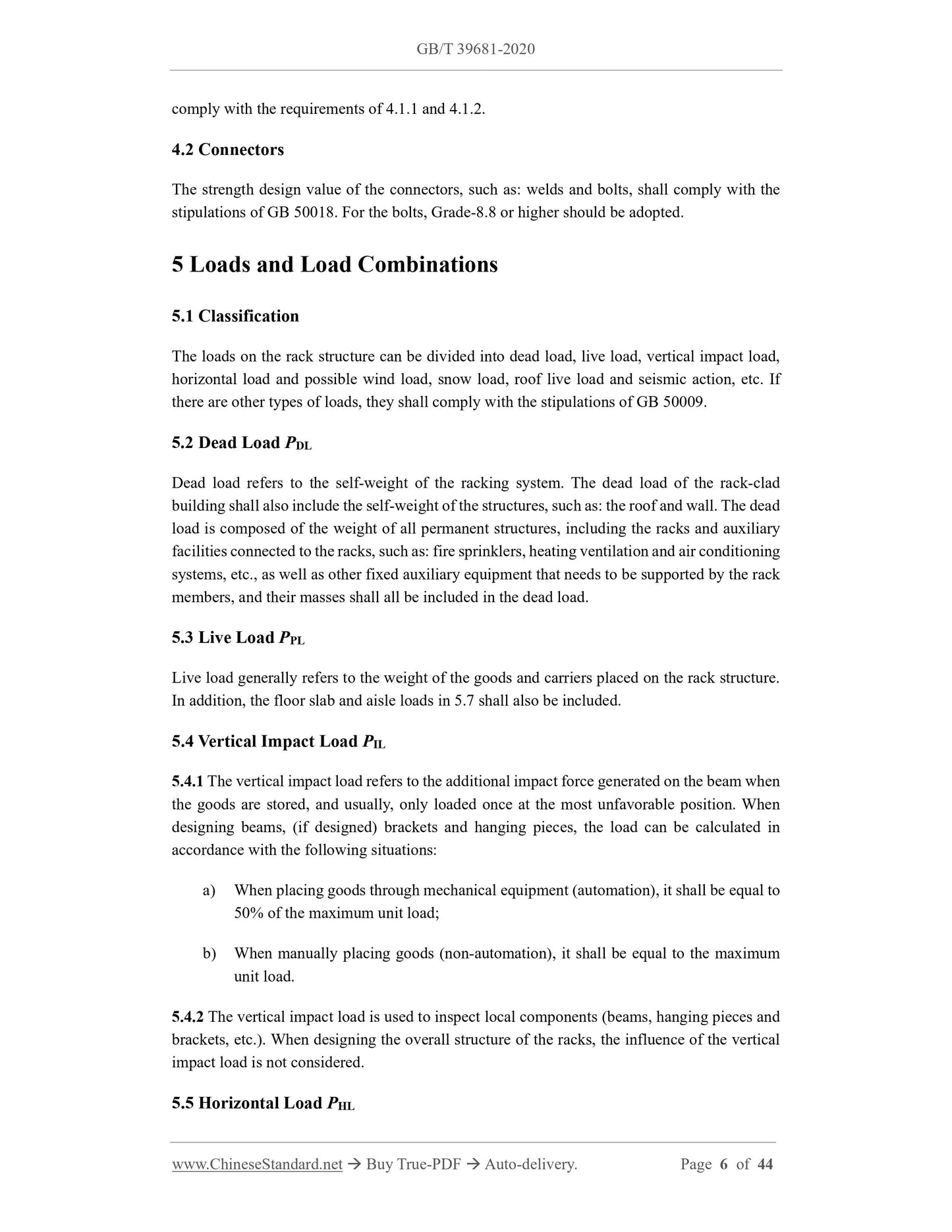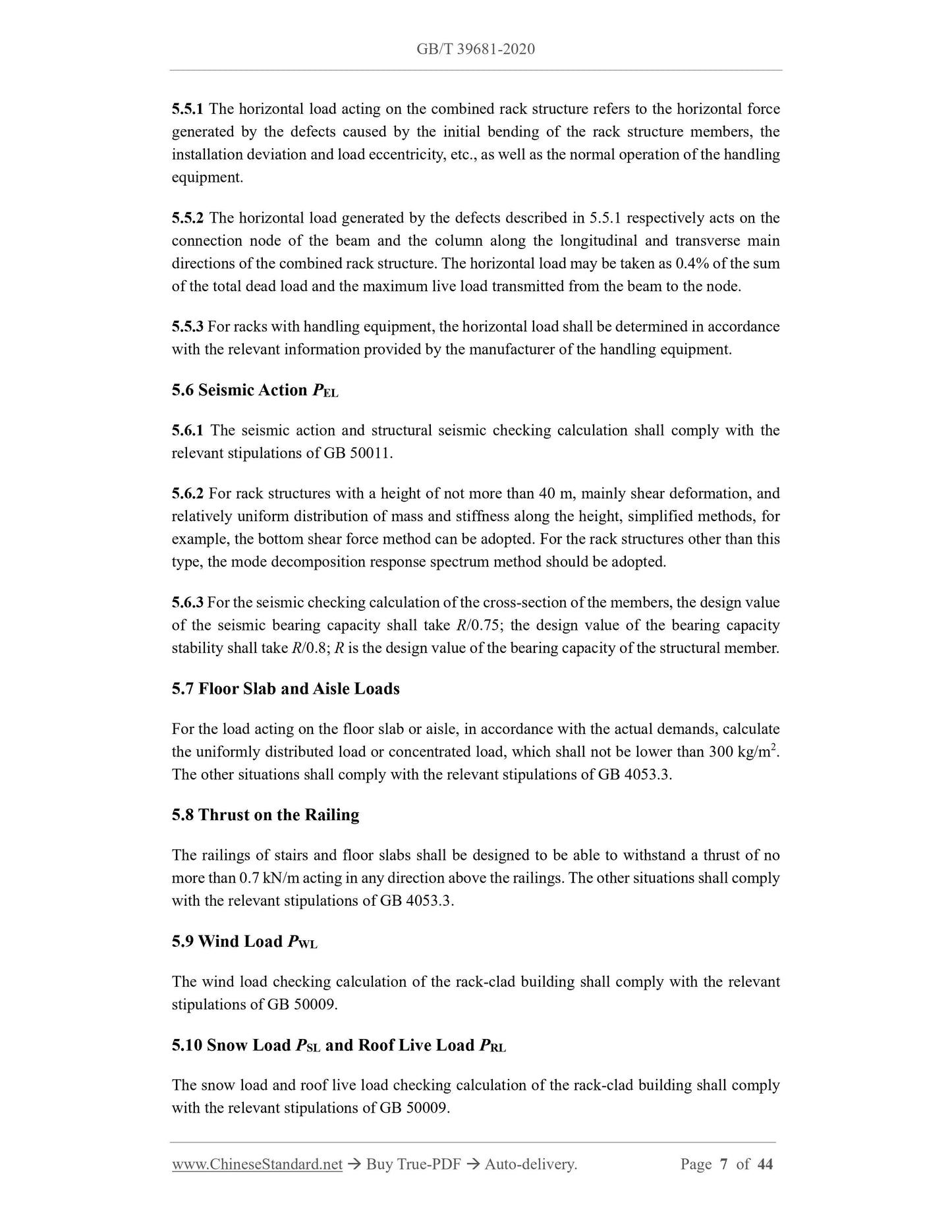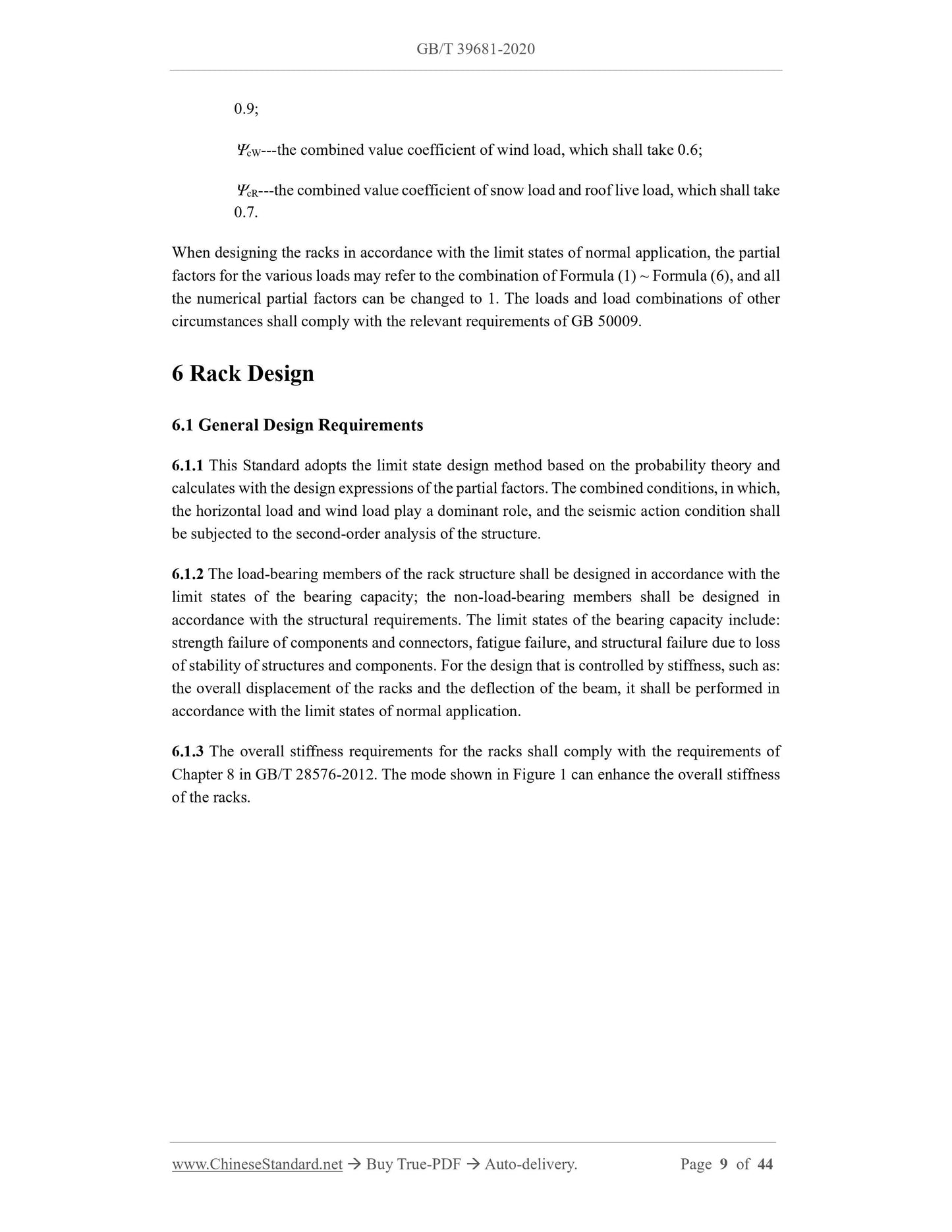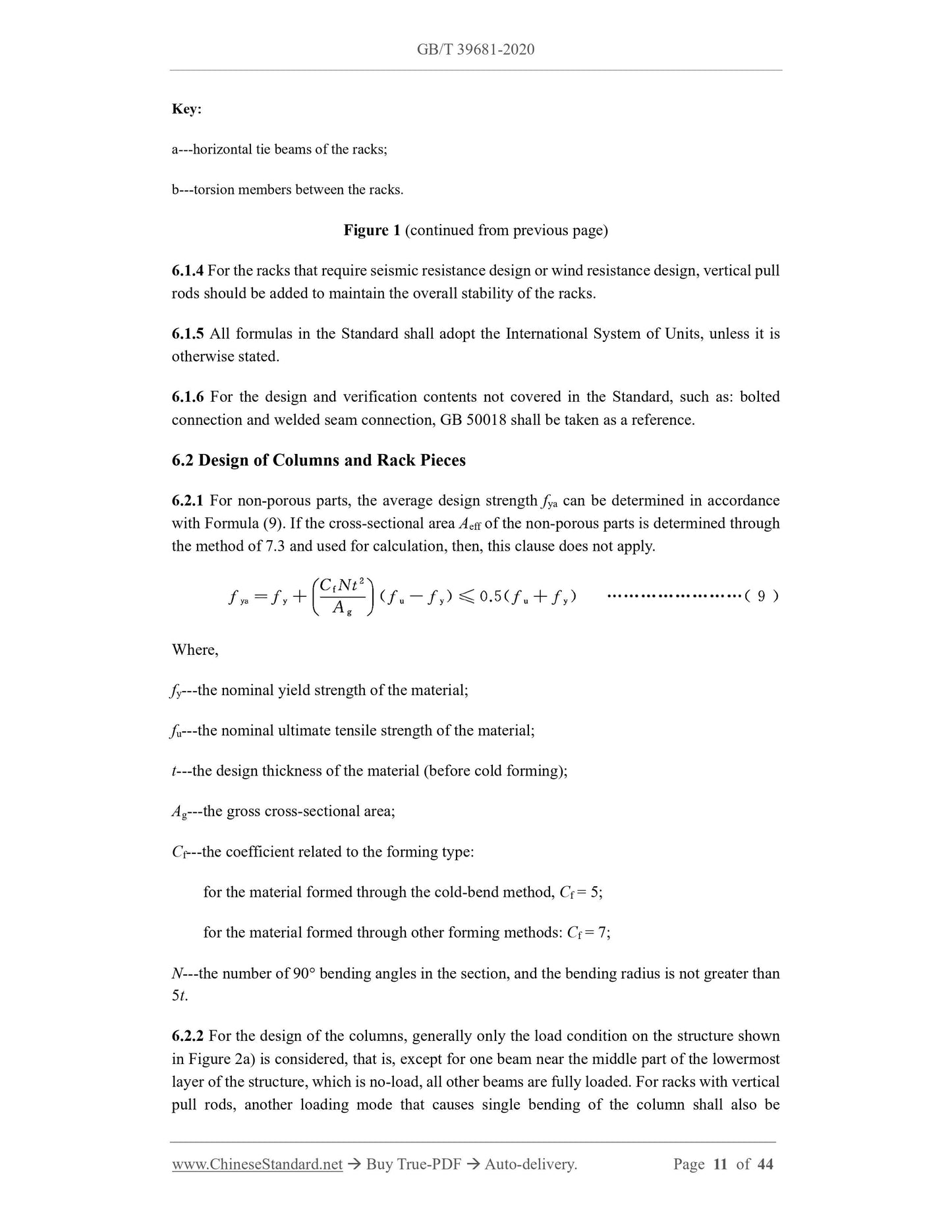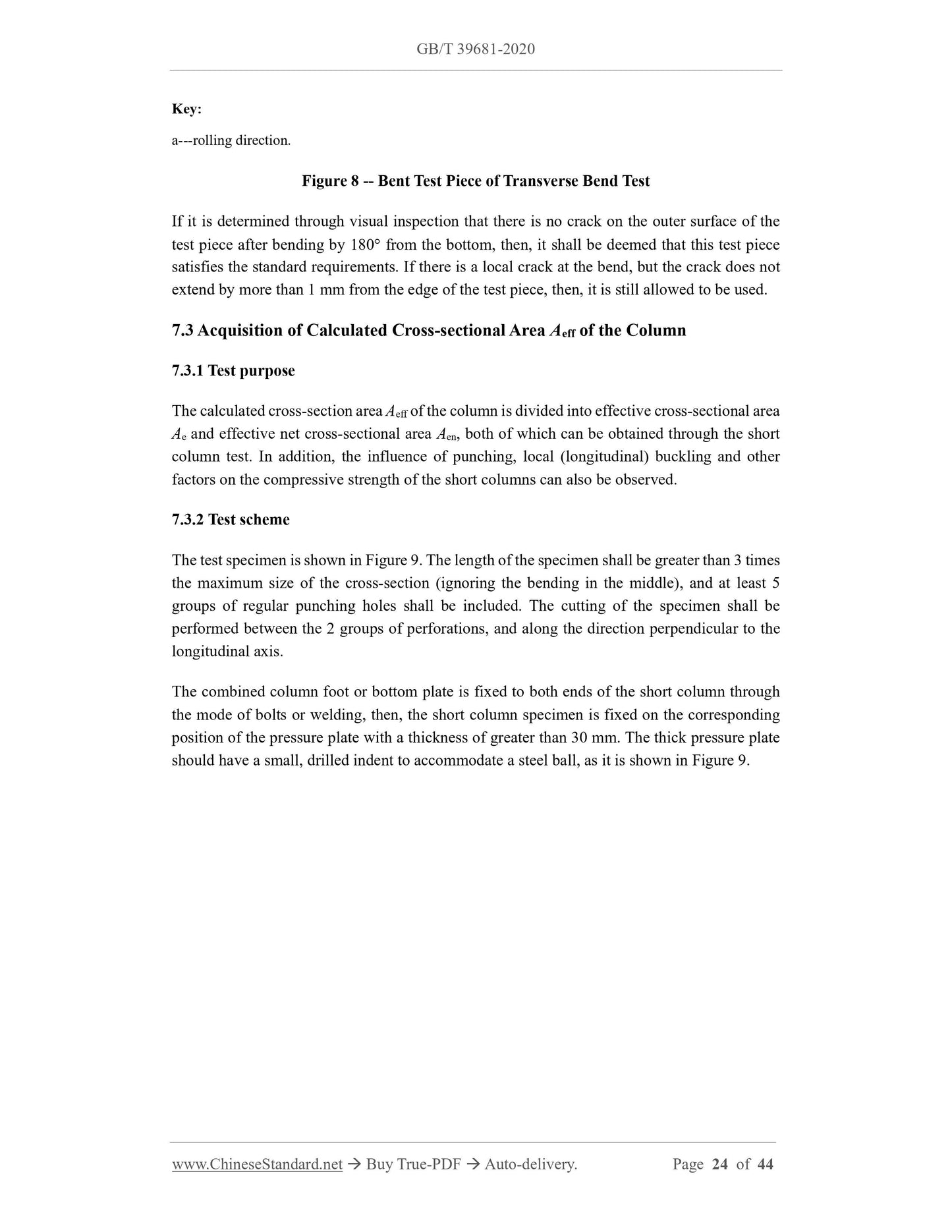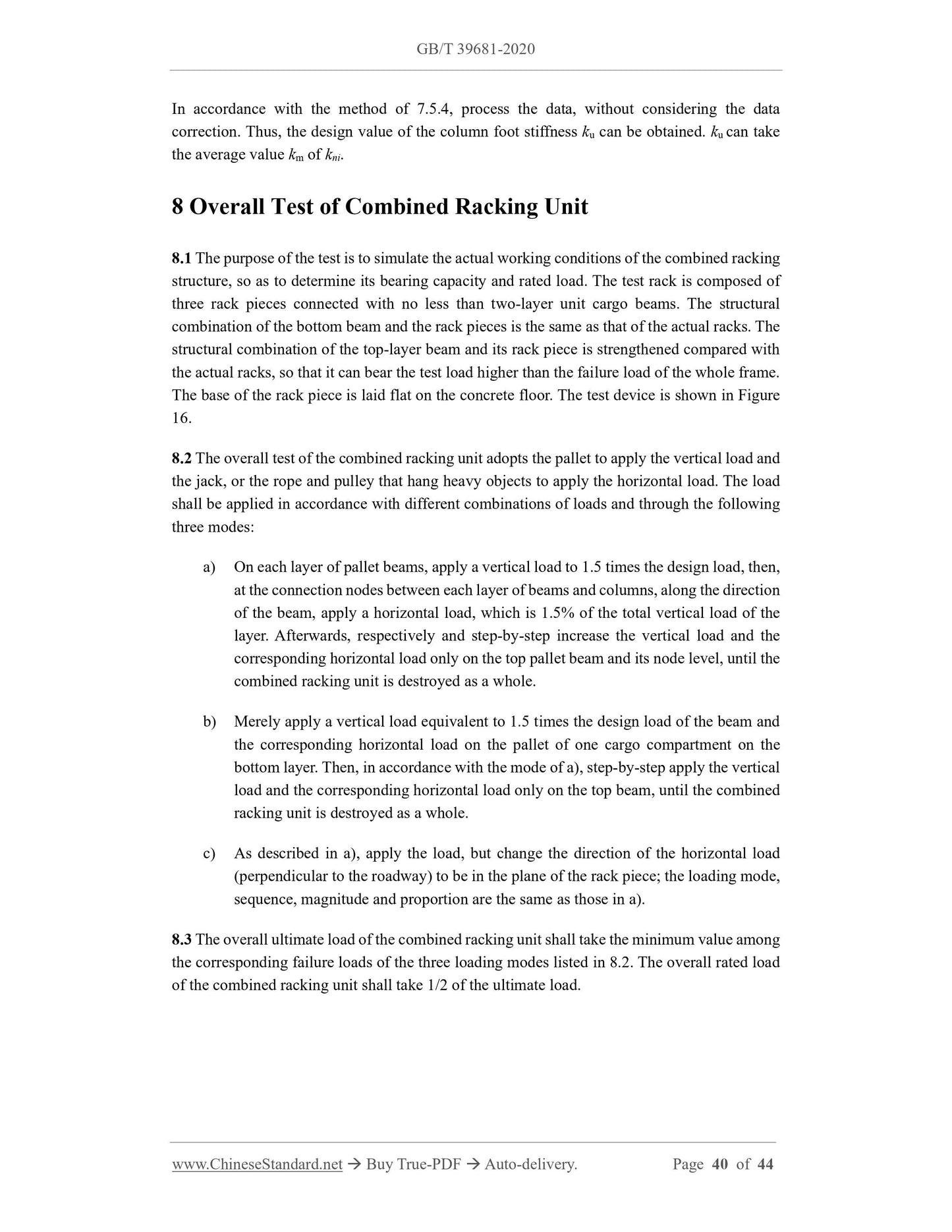1
/
of
9
www.ChineseStandard.us -- Field Test Asia Pte. Ltd.
GB/T 39681-2020 English PDF (GB/T39681-2020)
GB/T 39681-2020 English PDF (GB/T39681-2020)
Regular price
$440.00
Regular price
Sale price
$440.00
Unit price
/
per
Shipping calculated at checkout.
Couldn't load pickup availability
GB/T 39681-2020: Racking design code for steel static storage systems
Delivery: 9 seconds. Download (and Email) true-PDF + Invoice.Get Quotation: Click GB/T 39681-2020 (Self-service in 1-minute)
Newer / historical versions: GB/T 39681-2020
Preview True-PDF
Scope
This Standard specifies the terms, materials, loads and load combinations, racking design andtest methods for steel static storage systems.
This Standard is applicable to steel static storage systems made of cold-formed steel or hot-
rolled steel components, and mainly subjected to static loads.
Basic Data
| Standard ID | GB/T 39681-2020 (GB/T39681-2020) |
| Description (Translated English) | Racking design code for steel static storage systems |
| Sector / Industry | National Standard (Recommended) |
| Classification of Chinese Standard | J83 |
| Classification of International Standard | 53.080 |
| Word Count Estimation | 30,366 |
| Date of Issue | 2020-12-14 |
| Date of Implementation | 2021-07-01 |
| Quoted Standard | GB/T 228.1; GB/T 232; GB/T 700; GB/T 1591; GB/T 2518; GB 4053.3; GB/T 18354; GB/T 28576-2012; GB 50009; GB 50011; GB 50018-2002; JB/T 9018; JB/T 11270; JGJ 145-2013 |
| Regulation (derived from) | National Standard Announcement No. 28 of 2020 |
| Issuing agency(ies) | State Administration for Market Regulation, China National Standardization Administration |
| Summary | This standard specifies the terminology, materials, loads and load combinations, shelf design and test methods of the three-dimensional warehouse racking system. This standard is applicable to three-dimensional warehouse racking systems made of cold-formed steel or hot-rolled steel components and mainly subjected to static loads. |
Share
